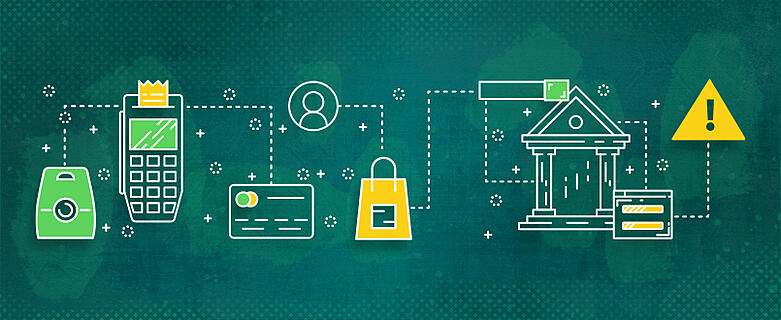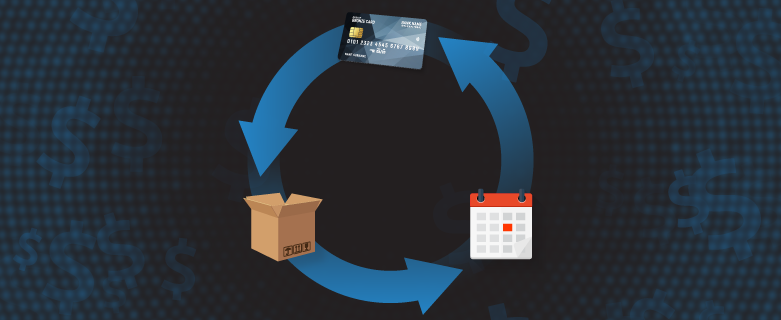News

How to Improve Customer Service to Reduce Chargebacks
Chargebacks are the bane of many merchant’s existences, particularly those who focus on e-commerce. And while responsible merchants understandably place great emphasis on implementing tech-based solutions to such problems as chargeback representment, reducing instances of true fraud, and identifying suspicious chargebacks, among many others, there is one invaluable tool at every merchant’s disposal that costs nothing to implement: good customer service.
Yes, by merely emphasizing one of the key elements of any successful business, and orienting certain aspects of it specifically toward chargebacks, you can reduce your potential susceptibility to chargebacks. This article will explain how good customer service practices can help your business reduce the number of chargebacks resulting from friendly fraud and win more disputes over chargebacks resulting from intentional chargeback fraud.
Be Transparent About Your Pricing & Terms
One common source of chargebacks is a customer being confused about some aspect of the merchant’s pricing structure. Whether intentional or not, obscurity with regard to prices is not in your best interest.
Trust your product and be upfront about what it costs. This will reduce circumstances in which a customer commits friendly fraud as a result of misunderstanding the costs of what they had purchased. It will also make it more difficult for unscrupulous actors to successfully receive a chargeback under the auspices of unclear pricing.
This can be especially important with subscription pricing models. While the benefits of subscription pricing for both merchants and customers are numerous, they do present circumstances in which a customer could be confused by the recurring billing. And a poorly explained subscription plan carries substantial risk for chargeback fraud.
Manage Customer Expectations
A similar dynamic exists with regards to communicating other aspects of what your customers can expect from your business. In particular; there is significant value in clearly explaining practical details such as shipping time and manufacturing time.
As with pricing, this reduces the likelihood of friendly fraud chargebacks arising from well-meaning but ill-informed customers not being aware of how long it will take for your product to reach them. And in circumstances where a customer may be engaging in more intentional deceit, clearly communicated information about delivery and manufacturing timetables can serve as invaluable evidence for chargeback representment, pre-arbitration, or even arbitration.
Be Magnanimous with Refunds
While it may seem counterintuitive, it can often be in your best interest as a merchant to freely offer refunds when they are requested. Most refund requests are genuine and not pretext for fraud. And the ones that are fraudulent may not always be worth contesting. The time, effort, and costs spent fighting refund requests can outweigh whatever revenue may be recouped from the ones that are disingenuous.
There are, of course, circumstances in which you should contest a refund request, such as a customer requesting a refund on an unusually large transaction or a refund request that contains some clear indication of fraud. But in general, you are better served by honoring refund requests, including not asking for consumable products or empty/partially used containers to be returned.
This serves your business well by reducing the instances in which you have to manage and potentially fight chargebacks. It also helps you build your business’s brand by demonstrating that your business values and trusts its customers. As Amazon founder and the world’s richest man, Jeff Bezos says, “A brand for a company is like a reputation for a person. You earn reputation by trying to do hard things well.”
Emphasize Kindness with Your Customer Service Representatives
Consider this quote attributed to poet and civil rights activist Maya Angelou: “I’ve learned that people will forget what you said, people will forget what you did, but people will never forget how you made them feel.” This is valuable advice with broad applications, but it is especially apt with regards to customer service.
Again, many chargebacks originate from honest misunderstandings—what we refer to as friendly fraud. Having well trained and easily reachable customer service representatives can help alleviate the sorts of confusion and misunderstandings that can lead to friendly fraud. In particular; training your reps to be forgiving and understanding in circumstances where customers may actually have made mistakes can help prevent those mistakes from becoming chargebacks. And, as with the aforementioned guidance on refunds, it can help your brand to be known as a kind, forgiving, and communicative business.
Make Use of Multiple Communication Channels & Document Everything
The value of effective communication and documentation throughout each aspect of the transaction process is immeasurable. Communication with good faith customers reduces friendly fraud and documentation of communication with unscrupulous customers can serve as valuable evidence in the event that you need to fight instances of attempted chargeback fraud. Some specific situations in which clear, open communication will help you avoid chargebacks involve shipping, cancellations, billing, refunds, and communication platforms.
Be upfront about any sorts of shipping delays. If a shipment is going to be delayed, inform the customer immediately and allow them to cancel the order if they do not want to wait. Relatedly, do not process the transaction until the product is ready to ship. That way, if there are delays or other complications that lead to a cancellation, there is no possibility of it becoming a chargeback.
Make cancellations—and all transaction processes—easy for customers to initiate by different means. Different customers prefer different communication methods (email, phone, text messaging, online chats, website forms, etc.), often based on their age. You can foster better communications with your customers through basic elements of your business infrastructure, such as including a cancellation link in emails, providing a chat box on your website, allowing customers to initiate customer service conversations over social media, always providing contact info for your customer service reps throughout the transaction process, and others.
For your own sake and for the sake of your customers, document everything with receipts. This includes transaction receipts, cancellation, receipts, and refund receipts. Refund receipts should include the following information: the original transaction ID number, the amount of the transaction, the date it was originally processed, and the Acquirer Reference Number (ARN); the refund transaction ID along with the amount, date, and ARN; and, finally, an explanation that the refund can take between 5 and 10 business days to be reflected in their bank account. Having all of this information available as a receipt protects your business from chargebacks in two primary ways: by making sure customers are fully informed and less likely to initiate a friendly fraud chargeback; and by serving as evidence for any chargeback disputes resulting from attempted chargeback fraud.
These principles are especially useful for subscription-based businesses. It is in your best interest to make it very easy for customers to cancel subscriptions. A lost subscription customer may hurt in the short term but allowing miscommunication about subscriptions to become chargebacks will hurt much more in the long term. Moreover, there are actual formal requirements for subscription businesses. Subscriptions services are required by the card networks to notify the customer they are going to charge them 7 days prior to processing the transactions and cancelation instructions must be included in these notifications.
If anything, lean toward over-communication regarding your transactions. There isn’t really a way for too much communication to result in chargebacks but there are countless ways that too little communication can.
Find New Ways to Improve Customer Service by Identifying Patterns in Behavior
What causes are behind your chargebacks? Is there a particular product or service that has a higher chargeback ratio than others? MidMetrics can help you understand the impact of chargebacks with in-depth analytics. Our comprehensive dashboards can help you pinpoint specific products, solutions, MIDs, banks, BINs, and price points that are driving up chargebacks. View deep insights into your refunds. Are you giving too many? MidMetrics gives you actionable insights that can help you improve customer service and reduce chargebacks.









